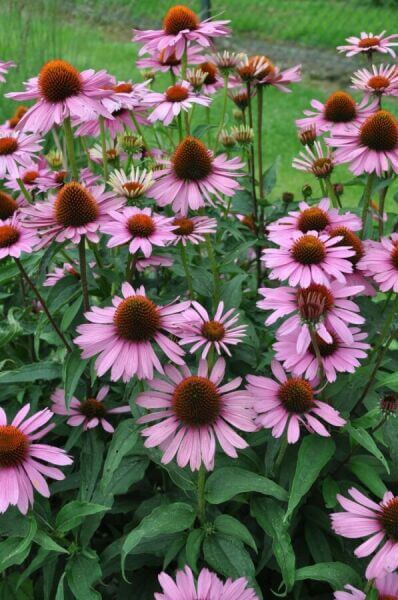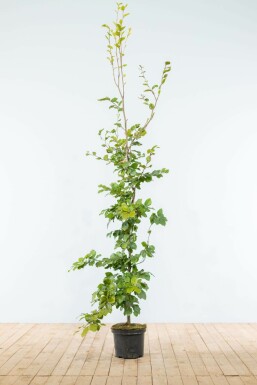Hedging Plants For Urban Spaces
Hedge Plants For Formal Landscaping
Boost your garden's appeal with rich hedge varieties such as Yew (Taxus), Thuja, Laurel, Photinia, and Bamboo, celebrated for their structural stability and ecological benefits.
Yew and Thuja provide evergreen coverage and winter season durability, while Laurel uses rapid development and broad, aromatic leaves.
Photinia adds seasonal appeal with its lively red foliage, and Bamboo lends a low-maintenance, peaceful atmosphere.
These hedges enhance air quality, decrease sound, and develop tranquil, private spaces.
Correct planting, spacing, and maintenance ensure vigorous development and eco-friendly harmony.
Explore how these rich ranges can elevate your garden's beauty and well-being.
Secret Takeaways
Change Your Garden With Lush Hedge Ranges
- Select Yew for its thick, evergreen growth and unrivaled durability.
- Go with Laurel for its quick growth and broad leaves, ensuring quick privacy.
- Select Photinia for its dynamic seasonal foliage, which turns a striking dark red.
- Use Bamboo for a low-maintenance, winter-hardy hedge with visual appeal.
- Area plants 2-3 per meter and prune frequently for optimum development and health.
Popular Hedge Plants
When transforming a garden with lush hedge varieties, it's vital to think about popular hedge plants such as Yew, Thuja, Laurel, and Photinia due to their special attributes and advantages.
Yew (Taxus) is extremely esteemed for its durability and dense, green growth, making it a prime choice for enduring landscapes.
Thuja is noted for its evergreen foliage and robust winter season strength.
Photinia includes seasonal vibrancy with red leaves that darken in time, producing dynamic visual appeal.
Laurel offers rapid growth and fragrant, broad leaves, perfect for fast personal privacy.
Furthermore, Bamboo is an outstanding choice for ambiance, offering a low-maintenance, winter-hardy alternative that boosts the garden's visual with its sophisticated, swaying walking sticks.
These selections cater to a range of horticultural requirements and preferences.
Benefits of Garden Hedges
Garden hedges use a plethora of benefits, making them a valuable addition to any landscape. These natural barriers are cost-efficient to carry out and offer significant wind defense, improving air circulation and adding to noise decrease. The thick foliage of hedges like Thuja and Beech ensures personal privacy by obstructing presence, producing a secluded and tranquil environment.
Hedges likewise play a crucial function in microclimate regulation, supplying a stable environment that cultivates plant growth and minimizes temperature level changes. Their complex leaf structures filter pollutants, enhancing air quality and contributing to a much healthier garden ecosystem.
Furthermore, hedges excel in sound reduction, taking in and deflecting acoustic waves to lower ambient noise levels. This double functionality of offering both visual and acoustic personal privacy boosts the general harmony and aesthetic appeal of any garden.
Planting and Maintenance Tips
For an effective hedge, meticulous preparation of the planting area is vital. Ensure the soil has appropriate pH and drain to support strong root development.
Space the plants properly for the picked species. Water the hedge often throughout its preliminary growth phase, adjusting as required with seasonal modifications.
Implement a systematic insect control and illness avoidance strategy, using chemical or natural treatments when essential. Frequently inspect for aphids, mites, and fungal infections.
Apply mulch to keep wetness and reduce weeds. Seasonal pruning promotes thick development and air blood circulation, essential for plant health.
Following these guidelines will help you cultivate a dynamic, properly maintained hedge that boosts the appeal of your garden.
Spacing and Cutting Standards
Spacing and Cutting Standards
Correct spacing and cutting are vital for cultivating healthy, aesthetically appealing hedges. Appropriate spacing guarantees each plant receives enough nutrients, light, and airflow.
Follow these standards for optimum hedge upkeep:
- Spacing: Position hedge plants 2-3 plants per meter to motivate robust development.
- Pruning Methods: Regular pruning is important for preserving preferred hedge height and shape. Trim new growth in summer season and cut down older wood throughout winter season.
- Seasonal Care: Adjust trimming schedules and methods according to seasonal requirements to ensure plant health.
- Hedge Height: Frequently screen and trim to maintain the desired hedge height and attain consistent aesthetic appeals.
Adhering to these actions will guarantee your hedge flourishes, enhancing both the appeal and performance of your garden.
Picking the Right Hedge
Selecting the Right Hedge
Selecting the proper hedge involves assessing factors such as mature height, foliage density, and environmental resilience. Successful hedge plant choice needs comprehending each types' development attributes and site-specific versatility.
For example, Yew (Taxus) offers excellent longevity and dense development, while Thuja is significant for its winter season resilience. Additional reading In addition, considering upkeep requirements is important; fast-growing species like Laurel or Privet need regular cutting, whereas low-maintenance options like Bamboo or Ivy may be preferable for those looking for minimal maintenance.
Ecological elements such as soil type, light schedule, and moisture conditions need to also direct the choice process. This mindful technique ensures the picked hedges will flourish, supplying both practical and aesthetic benefits to the garden landscape.
Shipment and Planting Guidance
To guarantee your hedge plants thrive, they must be provided by specialized couriers and planted immediately upon arrival.
Follow these necessary steps for successful planting:
- Soil Preparation: Improve the soil with organic matter to improve drainage and nutrient material.
- Planting Depth: Develop a trench twice the width and equal to the depth of the root ball.
- Watering Methods: Water completely after planting, keeping the soil consistently damp however not filled.
- Mulching: Use a layer of mulch to retain moisture and suppress weeds.
Client Assistance and Service
Offered the vital role of timely assistance in horticultural pursuits, our customer support team is offered 6 days a week through telephone, e-mail, and social networks to use expert advice and swiftly deal with any issues. Their devotion to fast reaction times makes sure consumer satisfaction by resolving queries related to plant health, ideal planting techniques, and maintenance schedules.

-------------------
Telephone
Six days a week
Within 24 hr
This comprehensive support system, strengthened by an outstanding 9.3/ 10 consumer ranking, highlights our dedication to boosting the gardening experience for every client.
Frequently Asked Questions
How Long Does It Take for Hedge Plants to Establish?
Hedge plants typically require one to three years to become fully established, with the exact duration differing by types and growing conditions.
Reliable care throughout this vital duration is vital for robust growth. Consistent watering, vigilant weed control, and appropriate fertilizer application are pivotal in promoting strong root advancement.
For instance, fast-growing types like Laurel may establish faster, while slower-growing ranges such as Yew may take longer. Persistent maintenance accelerates the facility procedure, resulting in dense and healthy hedges.
What Are the Finest Hedge Plants for Personal Privacy?
The question of the best hedge plants for personal privacy includes assessing evergreen and deciduous options.
Evergreen hedges like Thuja, Laurel, and Cypress provide year-round protection, guaranteeing continuous personal privacy.
On the other hand, deciduous hedges such as Beech offer seasonal personal privacy, shedding leaves in chillier months.
Key upkeep ideas for privacy hedges consist of routine trimming, fertilizing in spring, and correct spacing-- usually 2 to 3 plants per meter.
Additionally, constant watering and persistent weed removal are important for promoting healthy, dense development.
Can Hedge Plants Draw In Wildlife to My Garden?
Yes, hedge plants can bring in wildlife to your garden by offering essential advantages like shelter, food, and nesting sites, consequently enhancing regional biodiversity. Yew, holly, and laurel are excellent for attracting birds, while ivy supports a range of pests.
However, it is necessary to note that there are some downsides, such as increased maintenance to manage pests and routine maintenance. Carefully picking and maintaining hedge ranges can assist balance these disadvantages and advantages, ultimately promoting a lively and sustainable environment in your garden.
Exist Any Flowering Hedge Plants Available?
Yes, there are flowering hedge plants offered that can boost the beauty of your garden.
For example, Elaeagnus, likewise understood as Olive Willow, produces fragrant white flowers in the fall, adding a touch of beauty.
Photinia, another popular option, showcases lively red leaves that mature into a rich green, producing a vibrant visual result throughout the seasons.
To ensure these plants flourish, it's vital to practice correct pruning strategies and seasonal maintenance, such as trimming new growth in the summertime and cutting down in the winter season.
These procedures will assist keep the health and visual appeal of your blooming hedges.
How Do I Avoid Bugs in My Hedge Plants?
To avoid pests in hedge plants, employ natural pest control methods and maintain proper hedge care. Introduce beneficial insects like ladybugs, which prey on harmful pests, to create a balanced ecosystem.
Frequently check your hedges for signs of infestation and quickly remove any affected parts to avoid the spread. Make sure the health of your hedges by using balanced fertilizers and providing adequate water.
Utilize mulching to maintain soil wetness and appropriate spacing to decrease plant stress and promote robust development. These practices jointly help in reducing pest concerns and keeping a healthy hedge.
Conclusion
In essence, selecting the right hedge ranges such as Yew, Thuja, and Laurel can change any garden into a peaceful haven. These plants supply year-round greenery, enhance visual appeal, and deal practical advantages like noise reduction and wind defense.
Appropriate planting techniques, precise spacing, consistent watering, and seasonal cutting are crucial for optimal development.
Reliable shipment services and expert customer support make sure a seamless experience from purchase to planting, making it simpler than ever to elevate your outside space.
Garden hedges use a multitude of advantages, making them a valuable addition to any landscape. These natural barriers are cost-efficient to execute and provide considerable wind protection, boosting air circulation and contributing to sound reduction. The thick foliage of hedges like Thuja and Beech makes sure privacy by blocking visibility, producing a serene and secluded environment.

Pruning Strategies: Routine pruning is important for maintaining wanted hedge height and shape. Cut brand-new growth in summertime and cut back older wood during winter season.